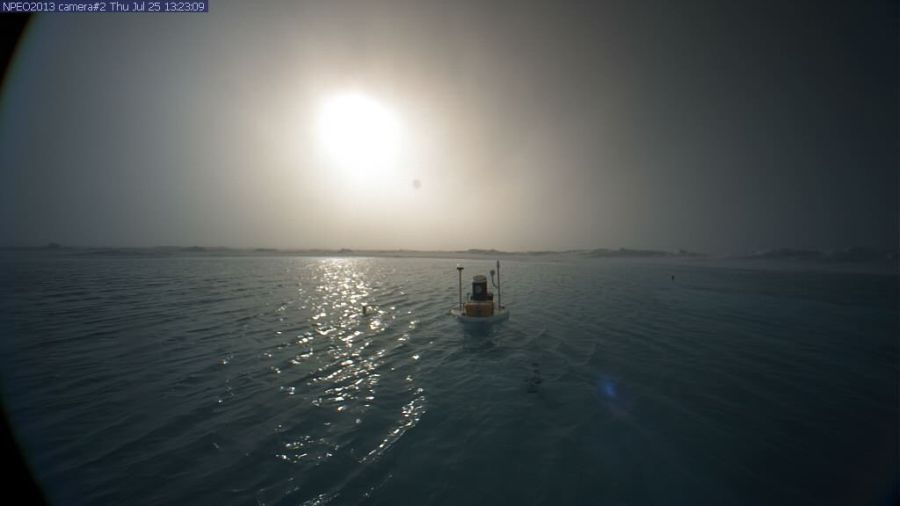What’s Swimming in the Open Water Near the North Pole These Days?
6
September, 2016
Globally, it’s
been a record-hot year.
But nowhere has seen so much anomalous warmth during 2016 as the
Arctic. As melt season draws to a close, some dramatic effects are
now becoming visible in the NASA satellite shots. Large regions near
the North Pole are losing their white covering of sea ice and showing
the telltale blue-black of open water:
The
above image, provided by NASA, shows the Northern Hemisphere polar
region on September 5, 2016. To get some sense of the size of this
region of low-concentration sea ice, the bottom edge of this capture
represents approximately 300 miles. For a point of reference,
the North Pole can be seen where the lines of the satellite image
frames converge in the lower left-hand side of the capture.
All
throughout this satellite shot, we see large expanses of open water.
The smaller openings are five to ten miles wide, with very large
openings ranging as much as 50 miles long appearing as well. Cloud
cover is present throughout the image and blocks some visibility to
open regions on the Siberian side of the Pole (upper section of the
image) and over the Pole itself (lower left).
(Arctic
sea ice area coming uncomfortably close to 2012 record lows in
this NORSEX
SSM model
summary.)
Loss
of ice in this region of the central Arctic is similar to and perhaps
more extensive than that seen during 2010 and 2013. In 2013,
strong storms combined with weakened ice states resulting in severe
melt near the North Pole, with ice becoming more dispersed throughout
the Arctic. This year, both storms and heat have hit the ice hard.
Now, ice edge extent is far lower than in 2013 even as
low-concentration ice floes and open water are visible near the Pole.
As such, the overall health of sea ice is dramatically worse during
2016.
Unfortunately,
sea ice buoy observations near the North Pole have seen cuts to
research funding and no camera buoys are operating near the Pole.
Otherwise, we’d probably be treated to images like this:
(North
Pole Camera 2 goes for a swim during the summer of 2013 as a period
of extensive near-polar melt set in. Most indicators show that ice
conditions at the North Pole this summer were as bad or worse. Image
source: North
Pole Environmental Observatory.)
The
large, open sections of water near the Pole appeared as sea-ice
extent and area in many measures fell to second lowest on record for
this time of year. Some measures (shown in the middle image above)
have come uncomfortably close to the 2012 record low line.
Overall,
2016 is a very bad year for sea ice. And the weird prospect of polar
bears (or anything else) being forced to swim at the North Pole is
not at all something to brighten one’s day.
Links:






No comments:
Post a Comment
Note: only a member of this blog may post a comment.